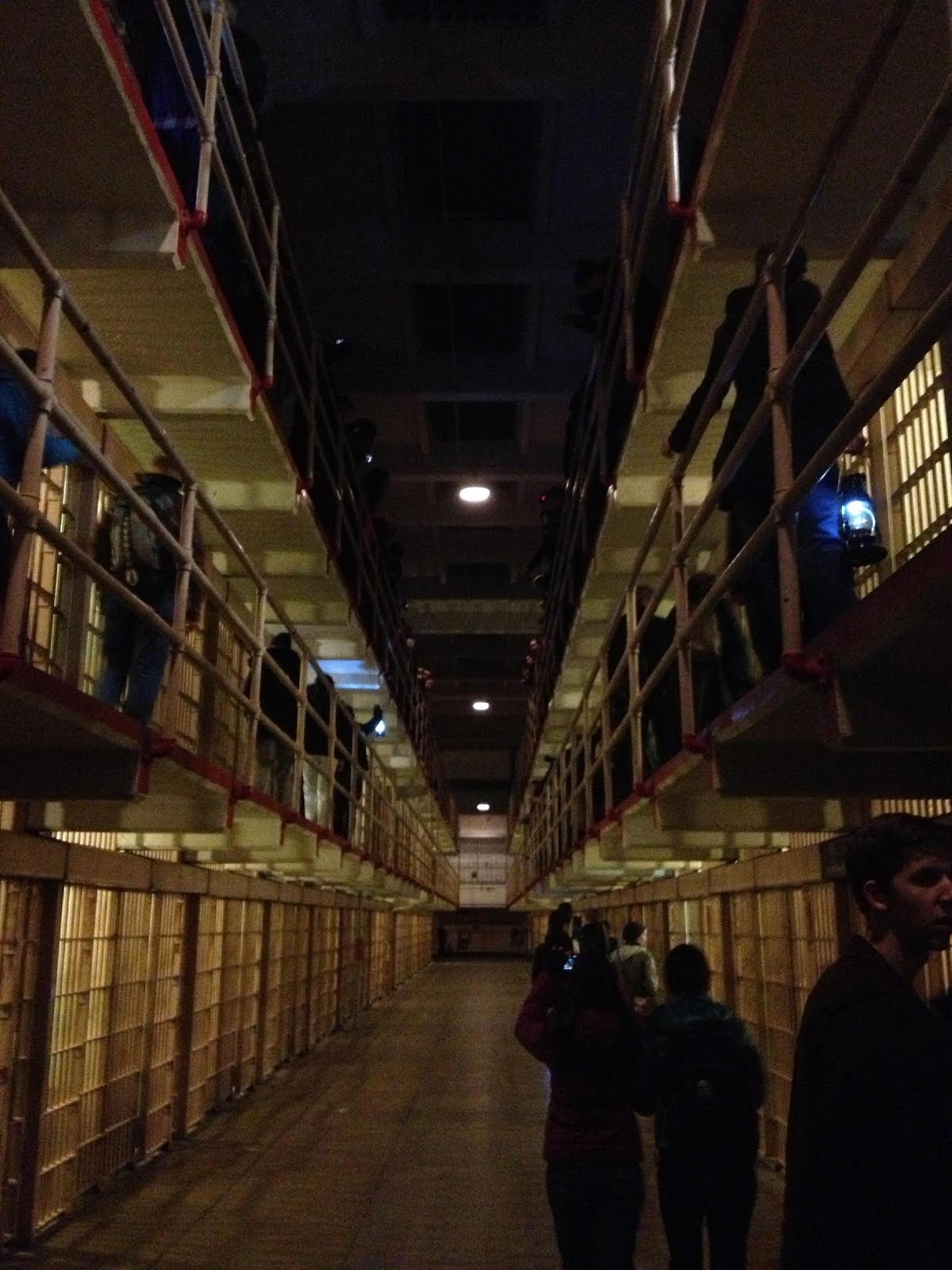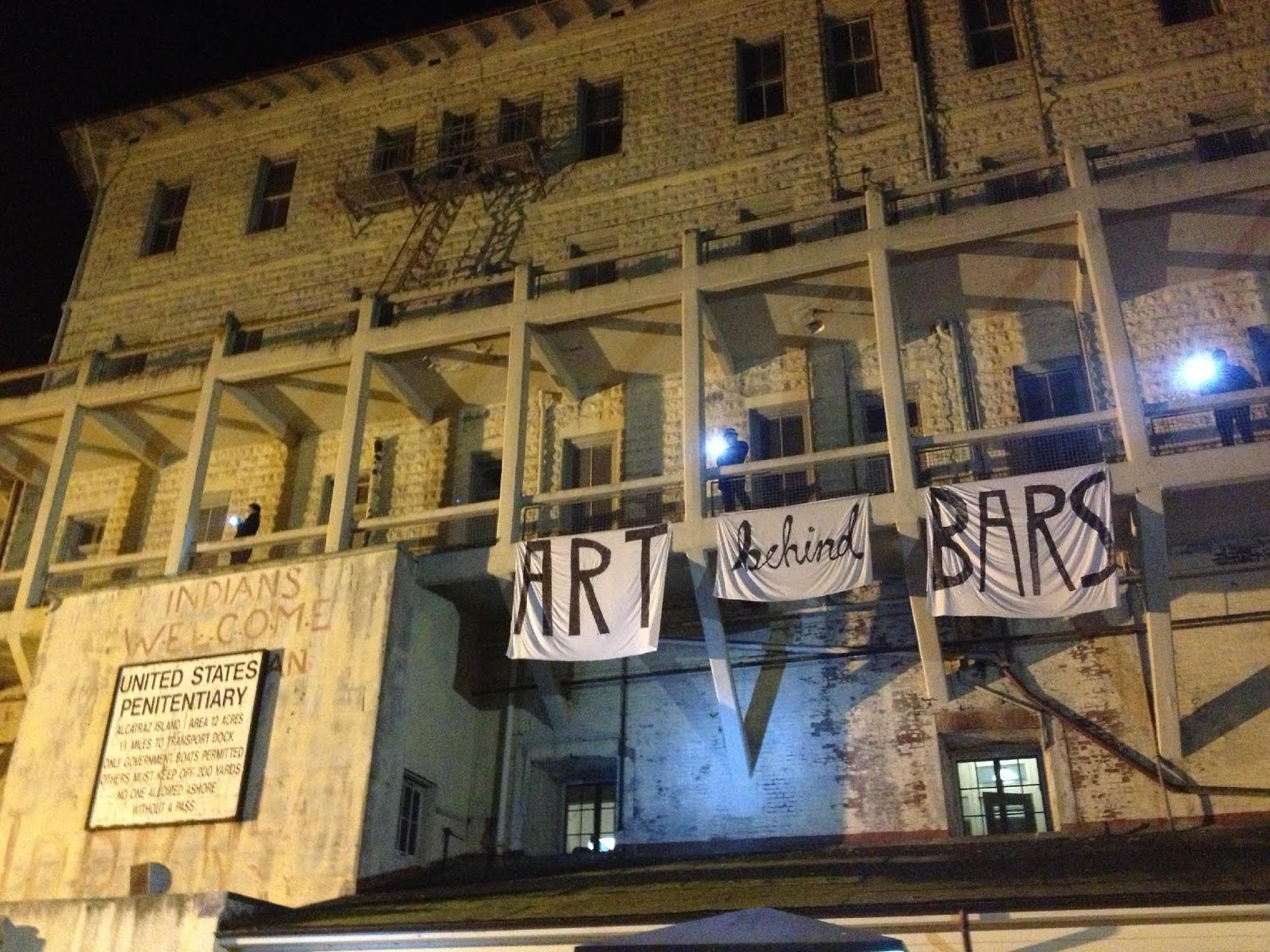“Do NOT look at me! Do NOT look at each other! Do NOT look down!”
The captain of the Alcatraz vessel screamed at us while boarding the makeshift ferry. Stumbling inside in our assigned prison blocks, we were commanded to load either upper or lower deck with the crew. Around the cabin, inmates played dice and spit out racial slurs only comprehendible in 1930’s convict slang. Lost in the demeaning treatment I had just faced as a guest of an immersive theatrical undertaking, I began to grasp its intent through the raw human emotion given off by every participant who bought a pass.
When I first received my passport for the “Alcatraz: Art Behind Bars” event, I had no idea what I was in for. Myself along with 300 other “lucky” participants became the actors (rather, prisoners) of the sadistic storyline of Alcatraz’s history. Slightly worried that I was about to enter the Stanford Prison Experiment 2.0, I moved with hesitation at every command shouted by the captain. However, my fears were quickly forgotten. Projected through the mediums of dance and visual arts, I was entirely interwoven in the forgotten stories of isolated Alcatraz inmates. The haunting prison was transformed into an interactive space of creativity and play.

“Alcatraz: Art Behind Bars” was an idea that came out of the Stanford d. School’s ReDesigning Theatre Project in combination with “The Island Collective”—- a group of renegade Bay Area artists. The performance was a year in the making before it debuted on that eerie Halloween eve. Over 30 various artists and engineers worked to make this seemingly impossible ambition a success. And was it ever — I mean, they rented a freakin island and threw a dance party.
Spanning a 3-hour window into the past, the ferry departed Alcatraz Pier 33 at 7:30pm on a surprisingly windless Wednesday evening. I found myself continually jolted by stark scars of history on the island despite the theatrical suspension of disbelief. One of the most rattling sights happened upon our initial docking aboard the island. Spotlights blinded all participants in a theatrical attempt to overshadow the engraved “Indians Welcome Home” sign.

Nonetheless I was totally caught up in the magical setting, and stepping onto the island was truly like stepping back in time. The island was a cold dank place, preserved from another world. All of the antique buildings appeared to be melting into the soft mud while worn out cobblestone eroded into every road. The landscape seemed to be just as defaced as the people who lived here. Yet the glimmer of the San Francisco skyline shown ever brighter the higher you climbed on that island.
We were separated into Prison blocks ranging A-L, dehumanized, and required to walk in a single file line into the prison.
“Every prisoner to a cell!” yelled the Captain.
We lined up in front of old yellowing tile and smashed-in toilet bowls awaiting the show. The two lead, albeit amateur, actors welcomed us to our new home for the evening. For the next 2 hours we were released to explore Alcatraz and stumble upon some vivid reenactments of the past.
And damn, were these actors vivid. When I walked into the dining hall, an intense dance fight scene was taking place between prisoners of the island. Not one of them lost conviction or commitment to their character. They scratched each other’s raw bodies, and socked one another over the head in vicious rage, completely ignoring the intermingled audience. In such an immersive theatre setting, it becomes even more challenging to disregard the audience, as the fourth wall is completely lost. Yet these people threw themselves between spectators and clambered their way under others’ legs. Every human was an added prop to the room.
Other venues of the prison took us into the minds of imprisoned men in Alcatraz. In the library, a trapeze artist danced to the sounds of voices echoing convict’s letters from the past. In the hospital wing, half-naked actors stole between operating rooms and dimly lit hallways. Asked before the show to bring flashlights, we cast our lights onto their performance of rolling over operating trays and into bathtubs, showing the struggle for life and sanity. Wherever I walked in that massive prison, more art was taking place, and more history was re-told.
By this point, I was certain this wasn’t the Stanford Prison experiment redux. My expectations of an overtly staged immersive theatrical production were totally shot down. What I thought were some theatre freaks trying to sell a beyond ambitious arty idea to the Bay Area public was the real deal. Their impassioned work paid off. None of it seemed tried or out of place, just raw and organic, perfectly fitting the context of Alcatraz. I was so engrossed in the stories, I totally lost judgment, and felt among them in their plight. This is the ultimate objective of immersive theatre, and boy, did they nail it.
